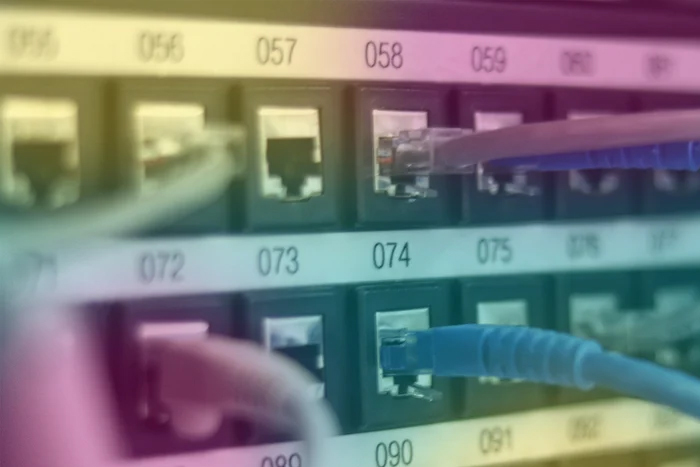Even if the word doesn’t ring any bells, it’s something all of use today when calling each other, without even thinking about it. In telecom interconnections means that different carrier’s networks are connected to allow mutual traffic. This makes it possible for a customer of one network to communicate with a customer from another. This also means that if the carrier’s networks aren’t connected, you can’t call each other at all. With a consistently expanding globalized society that is more integrated and connected than ever, interconnection is crucial to enjoy all sorts of activities apart from calls. Further this includes activities such as; e-commerce, mobile surf, e-mail, and bank errands online. Effective interconnection also allows new implementation of technique.
A few examples of interconnection include;
- Two networks beside each other that are interconnected to allow their subscribers to call each other.
- Long-distance carriers that have access to facilities of a local service supplier in order to compete for their current customer-base in regard to long-distance services.
- Traditional phone networks and new wireless mobile networks that interconnect to allow different subscribers to call each other.
- New competitors on the market interconnect with the prominent ones to lure subscribers into their common service field to call each other from the different networks.

History of interconnection
Historically speaking, interconnection was a huge income source for carriers, and allowed a bunch of business opportunities. There were interconnection fees when connecting calls and were paid by one service supplier to the other to perform calls on their network. For example; if a Telia customer wanted to call Tele2 customer, the first customer had to pay their carrier, whom would pay the second carrier to complete the call. Tricky and sticky to say the least. These fees were at first completely unregulated which resulted in huge interconnection wars and an uncontrolled market.
Interconnection and regulations were soon imposed and is crucial due to its elimination of the need to customers to have subscriptions for different networks in order to be able to communicate with one and other due to ongoing disputes. Because of these disputes in some countries, carriers chose to hinder interconnection by lowering the quality and raising fees. This resulted in inhabitants in these countries seeing it as a necessity to have various SIM cards for each operator just to be able to call others. This not only raises costs for customers, but completely eliminates ability to call freely.
This has as mentioned resulted in that interconnection today is used as a tool to control and oversee competition on the telecom market. It has in addition also been introduced as a requirement for market dominant carriers. Interconnection in EU is completely associated with commercial arrangement whereas carriers are encouraged to offer network functions that allow competitors to offer services that differ from the other. This not only helps control competition on the market, but also helps create diverse market with a range of services that complement each other. Furthermore, this interconnection regime and the associated decisions have had a huge impact on development and speed in growth of different market segments. The regulation actions have been vastly important in creating a healthy market climate where the biggest competitors are hindered from completely taking over finding new loopholes.
Interconnection agreements
Today it’s required to have an agreement for interconnection, which basically means a corporate contract between two telecom organisations in order to connect their networks and exchange traffic. These agreements are prevalent in both the public switch network (PSTN) as well over internet. In the public network, it involves settlement-fees based on call origin, destination, connection time and length, when it’s not abolished by carriers. However, calls over internet are generally harder to define and regulate with fee-free “peering”.
Interconnection and internet
Interconnection over internet is often called “peering” or “peer-to-peer” which means that users of different internet networks or VoIP suppliers can communicate with each other. The different VoIP suppliers enter a mutual agreement to allow this functionality. This has grown increasingly more popular because it can vastly reduce costs. In addition, with the ever-so developing telecom field, it’s more relevant than ever to create international wholesale opportunities in telecom. If a wholesale VoIP supplier partners up with another international supplier, they can with internet steer traffic without passing through UCL (underlying carrier) whom in turn sends a link to PSTN that takes a fee for their services. Internet call can therefore be passed directly between the partnered-up VoIP suppliers which not only reduces costs, but also increases quality for end-users in terms of less jumps that would normally delay calls, and also equipment failure.
Since more suppliers choose to enter a partnership with their different infrastructures while VoIP services increase in number, it decreases the need of UCL and PSTN. In the future this could come to completely change the market in terms of smaller VoIP suppliers ruling rather than government and dominating actors today.
Conclusion
Interconnection means that different carrier’s networks are connected to allow traffic between their customers. This was previously a great income as well as cost source for carriers until its regulation. This resulted in competition disputes where carriers could limit traffic or raise fees if unsatisfied. When it was regulated it created a much healthier market environment that allowed more actors to complete each other’s services. Interconnection is also very relevant in terms of the development of internet and VoIP. VoIP carriers can enter partnerships to allow communication of their existing customers over internet which means lower costs since it’s no longer steered through UCL or PSTN. This can come to change the market completely and the actors within in the future.


